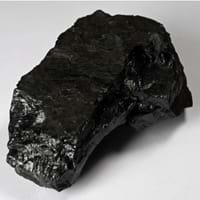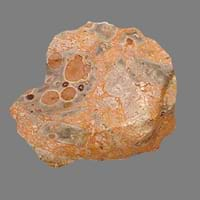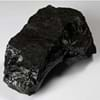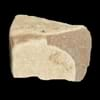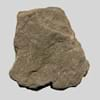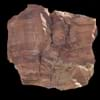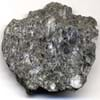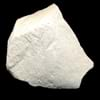Definition
Coal is a combustible black or brownish-black sedimentary rock usually occurring in rock strata in layers called coal beds
Felsite is a very fine grained volcanic rock that may or may not contain larger crystals and light colored rock that typically requires petrographic examination or chemical analysis for more precise definition
Discoverer
John Peter Salley
Unknown
Etymology
From the Old English term col, which has meant mineral of fossilized carbon since the 13th century
From English feldspar and -ite
Class
Sedimentary Rocks
Igneous Rocks
Sub-Class
Durable Rock, Soft Rock
Durable Rock, Medium Hardness Rock
Group
Not Applicable
Volcanic
Other Categories
Coarse Grained Rock, Fine Grained Rock, Medium Grained Rock, Opaque Rock
Fine Grained Rock, Opaque Rock
Texture
Amorphous, Glassy
Arborescent Patterned, Vitreous
Color
Black, Brown, Dark Brown, Grey, Light to Dark Grey
Black, Blue, Brown, Green, Orange, Red, Tan, Yellow
Durability
Durable
Durable
Appearance
Veined or Pebbled
Layered, Banded, Veined and Shiny
Interior Uses
Not Yet Used
Decorative Aggregates, Flooring, Interior Decoration
Exterior Uses
Not Yet Used
Paving Stone, Garden Decoration
Other Architectural Uses
Not Yet Used
Curbing
Construction Industry
Cement Manufacture, for Road Aggregate, Making natural cement, Steel Production
Arrowheads, Cutting Tool, Knives, Scrapers, Spear Points
Medical Industry
Not Yet Used
Surgery
Antiquity Uses
Artifacts
Artifacts
Commercial Uses
Alumina Refineries, Electricity Generation, Liquid Fuel, Manufacture of Soap, Solvents, Dyes, Plastics and Fibres, Paper Industry
Mirror, Jewelry
Types
Peat, Lignite, Sub-Bituminous Coal, Bituminous Coal, Anthracite, Graphite
Not Available
Features
Helps in production of Heat and Electricity, Used as fossil fuel
Available in Lots of Colors and Patterns, Clasts are smooth to touch, Splintery, Very fine grained rock
Archaeological Significance
Monuments
Not Yet Used
Not Yet Used
Famous Monuments
Not Applicable
Not Applicable
Sculpture
Not Yet Used
Not Yet Used
Famous Sculptures
Not Applicable
Not Applicable
Pictographs
Not Used
Used
Petroglyphs
Not Used
Used
Figurines
Not Yet Used
Not Yet Used
Formation
Coal forms from the accumulation of plant debris in a swamp environment which is buried by sediments such as mud or sand and then compacted to form coal.
Felsite is a fine-grained, hard rock which is a type of metasomatite, essentially altered basalt. It forms with or without crystallization, either below the surface as intrusive rocks or on the surface as extrusive rocks.
Mineral Content
Analcime, Apatite, Barite, Calcite, Chalcopyrite, Chlorite, Chromite, Clausthalite, Clay Minerals, Crandallite Group, Dolomite, Feldspar, Galena, Gypsum, Marcasite, Muscovite or Illite, Pyrite, Quartz, Siderite, Sphalerite, Zircon
Feldspar, Iron Oxides
Compound Content
Carbon, Hydrogen, Nitrogen, Oxygen, Sulphur
Aluminium Oxide, CaO, Iron(III) Oxide, FeO, Potassium Oxide, MgO, MnO, Sodium Oxide, Phosphorus Pentoxide, Silicon Dioxide, Titanium Dioxide
Types of Metamorphism
Burial Metamorphism, Cataclastic Metamorphism, Regional Metamorphism
Burial Metamorphism, Contact Metamorphism, Impact Metamorphism, Regional Metamorphism
Types of Weathering
Not Applicable
Biological Weathering, Chemical Weathering, Mechanical Weathering
Types of Erosion
Not Applicable
Chemical Erosion, Glacier Erosion, Water Erosion
Grain Size
Medium to Fine Coarse Grained
Fine Grained
Fracture
Conchoidal
Conchoidal
Porosity
Less Porous
Very Less Porous
Luster
Dull to Vitreous to Submetallic
Vitreous
Compressive Strength
Not Available
Cleavage
Non-Existent
Non-Existent
Toughness
Not Available
Not Available
Specific Gravity
1.1-1.4
2.6-2.7
Transparency
Opaque
Translucent
Density
1100-1400 g/cm3
2.6 g/cm3
Resistance
Heat Resistant
Heat Resistant, Impact Resistant
Deposits in Eastern Continents
Asia
Bangladesh, Burma, Cambodia, China, India, Indonesia, Kazakhstan, Malaysia, Mongolia, Pakistan, Turkey, Vietnam
Afghanistan, Indonesia, Japan, Russia
Africa
Botswana, Kenya, Morocco, Mozambique, South Africa, Tanzania
Kenya
Europe
Belgium, Bulgaria, England, France, Germany, Greece, Hungary, Kosovo, Netherlands, Norway, Poland, Romania, Serbia, Slovakia, Slovenia, The Czech Republic, Ukraine, United Kingdom
Greece, Hungary, Iceland, Italy, Turkey
Others
Not Yet Found
Not Yet Found
Deposits in Western Continents
North America
Canada, Mexico, USA
Canada, Mexico, USA
South America
Brazil, Chile, Colombia, Venezuela
Argentina, Chile, Ecuador, Peru
Deposits in Oceania Continent
Australia
New South Wales, Queensland, Victoria
New Zealand
All about Coal and Felsite Properties
Know all about Coal and Felsite properties here. All properties of rocks are important as they define the type of rock and its application. Coal belongs to Sedimentary Rocks while Felsite belongs to Igneous Rocks.Texture of Coal is Amorphous, Glassy whereas that of Felsite is Arborescent Patterned, Vitreous. Coal appears Veined or Pebbled and Felsite appears Layered, Banded, Veined and Shiny. The luster of Coal is dull to vitreous to submetallic while that of Felsite is vitreous. Coal is available in black, brown, dark brown, grey, light to dark grey colors whereas Felsite is available in black, blue, brown, green, orange, red, tan, yellow colors. The commercial uses of Coal are alumina refineries, electricity generation, liquid fuel, manufacture of soap, solvents, dyes, plastics and fibres, paper industry and that of Felsite are mirror, jewelry.
